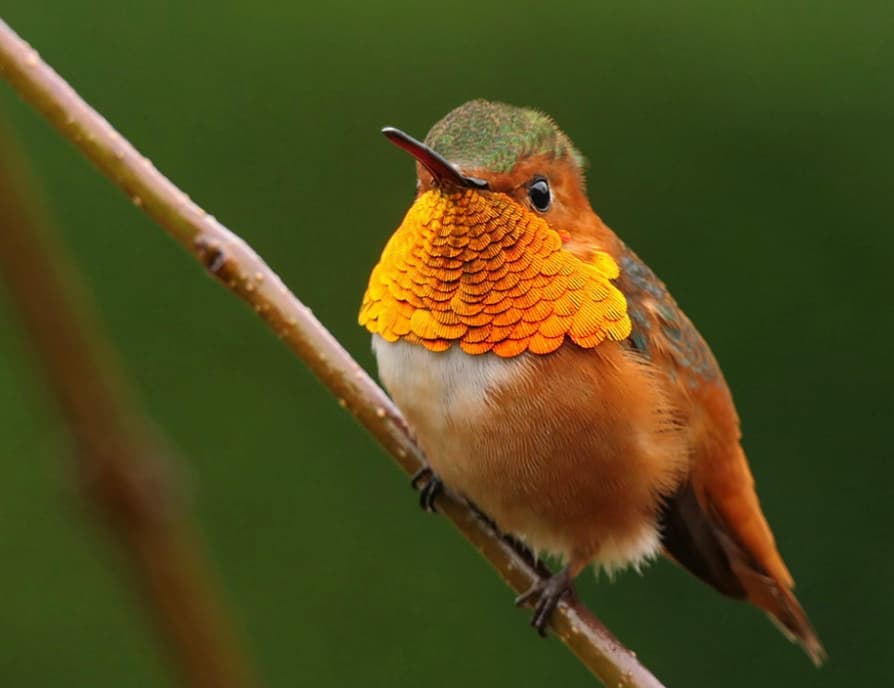Nature has an exquisite way of captivating our hearts with its extraordinary creations, and the Rufous Hummingbird stands as a perfect example. With its vibrant plumage, mesmerizing flight patterns, and charming personality, this tiny avian wonder never fails to leave a lasting impression. In this blog post, we will delve into the captivating beauty of the Rufous Hummingbird and uncover the remarkable qualities that make it a true gem of the avian world.
Appearance
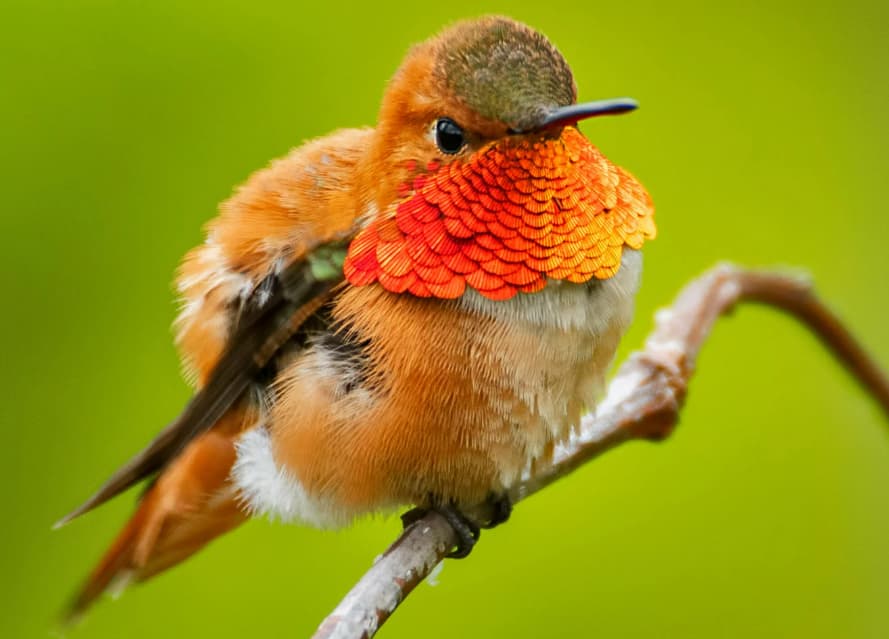
The Rufous Hummingbird (Selasphorus rufus) is a small-sized bird that measures around 3 to 4 inches in length. However, its diminutive size doesn’t hinder its ability to make a grand impression. The male Rufous Hummingbird is adorned with striking colors, displaying a brilliant mix of fiery oranges, rich reds, and shimmering browns. The iridescent feathers on its throat, known as the gorget, create a remarkable metallic display, shifting from bright copper to vibrant red when the sunlight catches it at the right angle. This iridescence is truly a sight to behold, adding an ethereal touch to this tiny marvel.
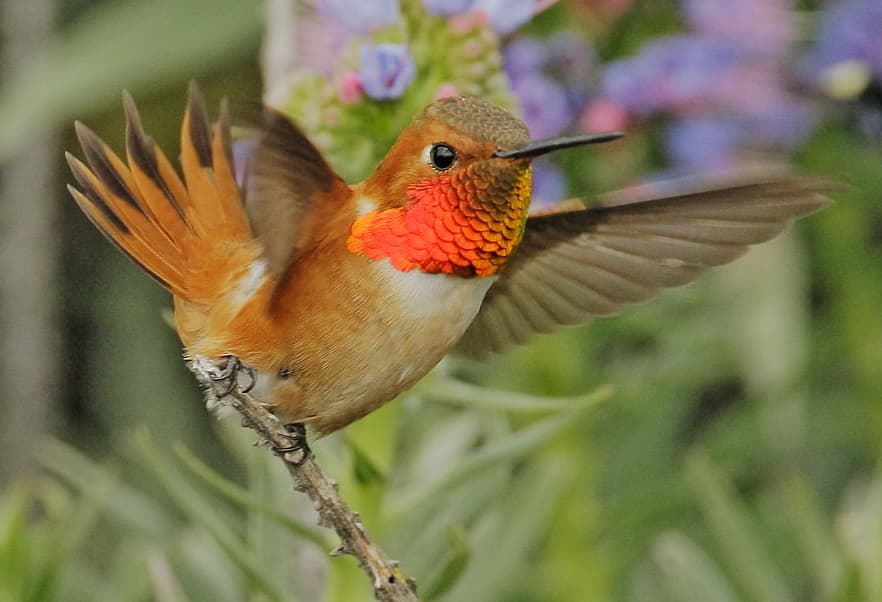
The female Rufous Hummingbird, while less showy than her male counterpart, possesses a beauty of her own. Her feathers exhibit a more subdued palette, with a combination of green and brown hues that blend seamlessly with her natural surroundings. This camouflage allows her to protect her nests and young from predators effectively.
Behavior and Flight
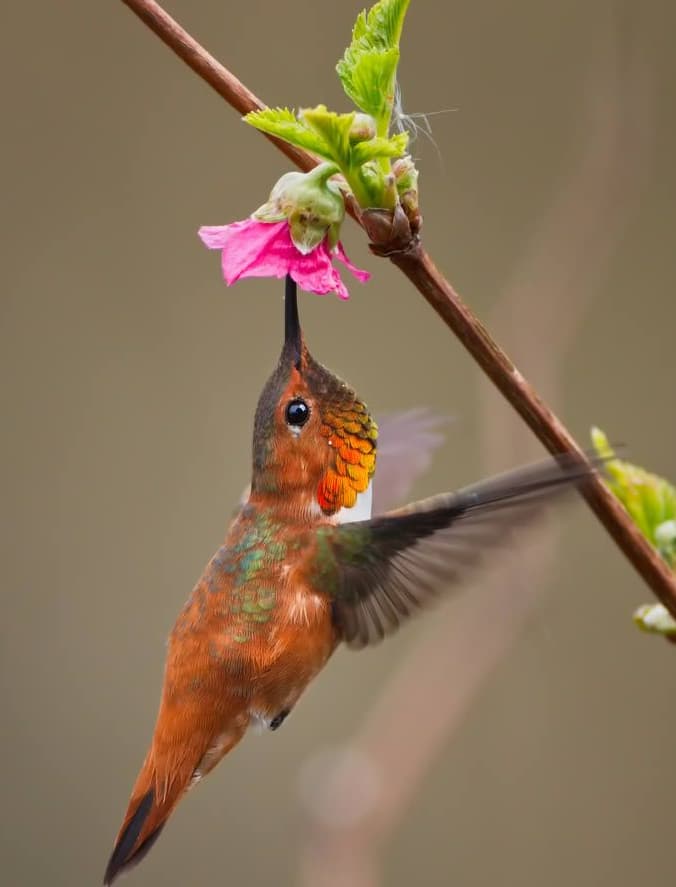
One of the most enchanting aspects of the Rufous Hummingbird lies in its agile and acrobatic flight. These birds possess an incredible wingbeat rate, capable of reaching up to 60 beats per second. Such rapid wingbeats enable them to hover effortlessly mid-air, defying gravity and allowing us to witness their awe-inspiring aerial displays. The humming sound created by their wings adds to their mystique, earning them the name “hummingbird.”
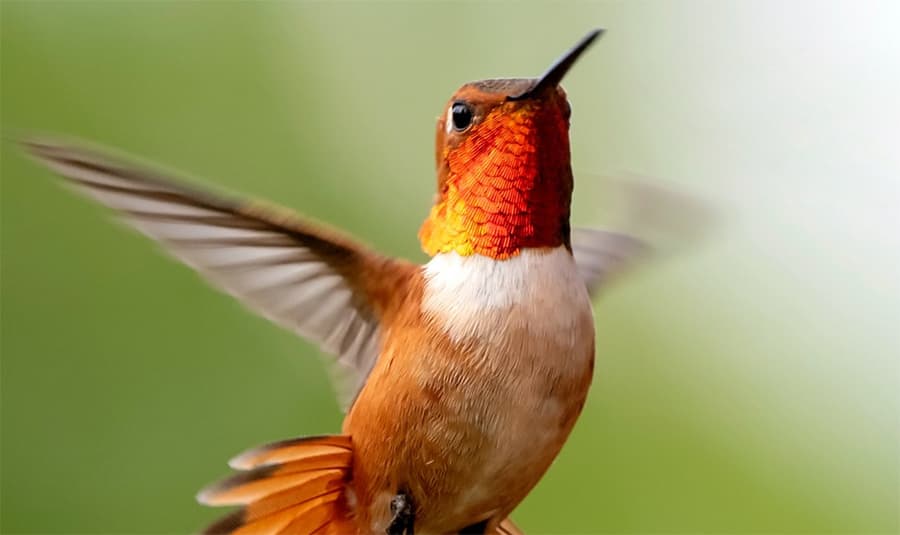
The Rufous Hummingbird’s flight patterns are characterized by impressive speed and agility. They are known for their long migratory journeys, traveling up to 3,000 miles twice a year, showcasing their exceptional endurance. As they dart and dive through the air, their flight becomes a mesmerizing dance, captivating anyone fortunate enough to witness it.
Ecological Significance
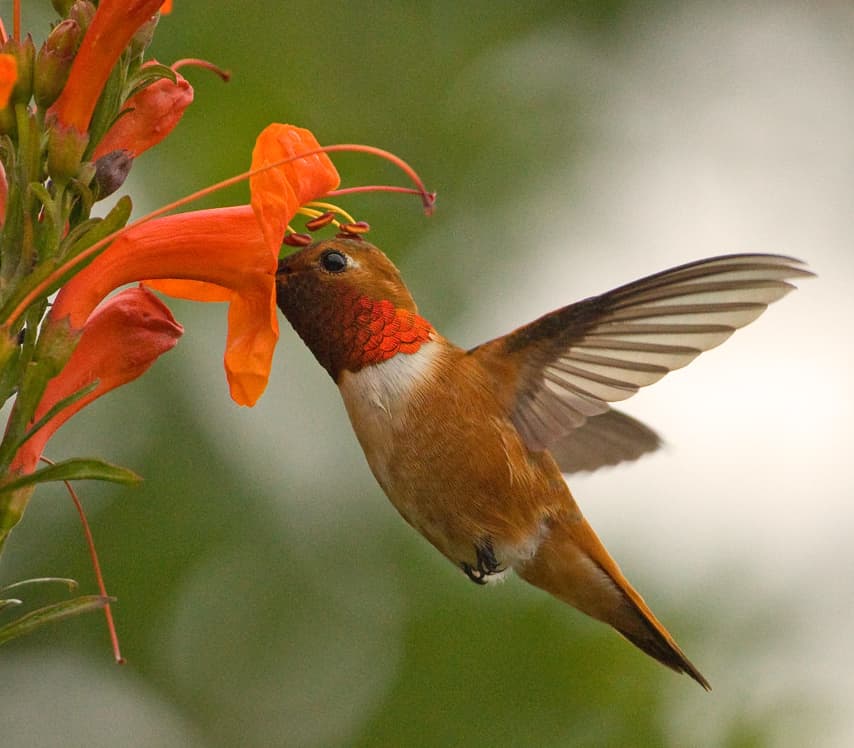
Apart from their undeniable beauty, Rufous Hummingbirds play a vital role in maintaining ecological balance. As they feed on nectar from flowers, they inadvertently become pollinators, facilitating cross-pollination and assisting in the reproduction of various plant species. In return, the hummingbirds rely on these nectar-rich flowers for sustenance during their migratory journeys.
Their beak and long, extensible tongue, specifically adapted for extracting nectar from flowers, allow them to access hidden nectar reserves that are inaccessible to other pollinators. By actively participating in this symbiotic relationship with plants, Rufous Hummingbirds contribute to the overall health and biodiversity of their ecosystems.
Feeding and Diet
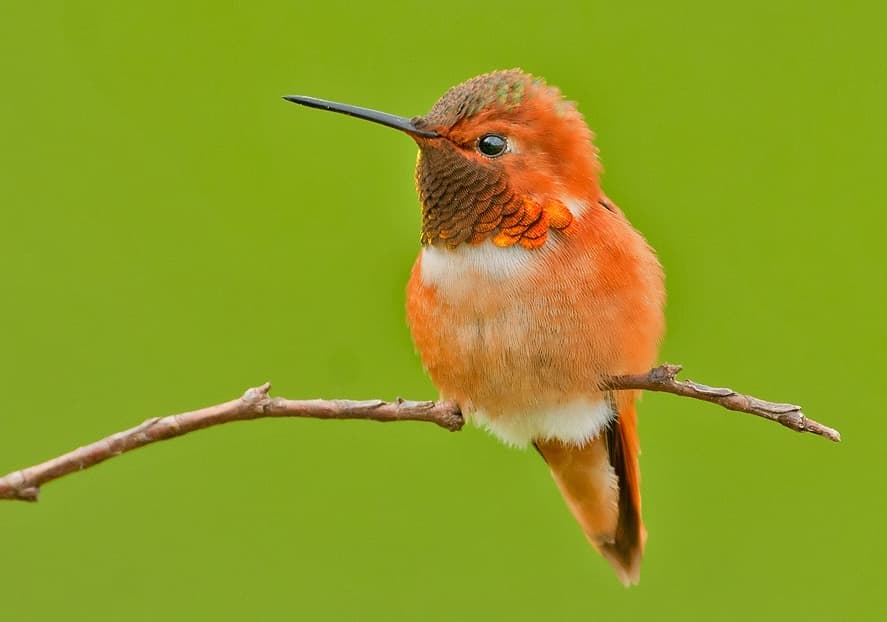
Rufous Hummingbirds have a voracious appetite for nectar, which serves as their primary food source. They are attracted to a variety of flowering plants, including trumpet vines, columbines, penstemons, and salvias, among others. To supplement their diet, they also consume insects and spiders, providing them with additional protein and nutrients.
Breeding and Nesting
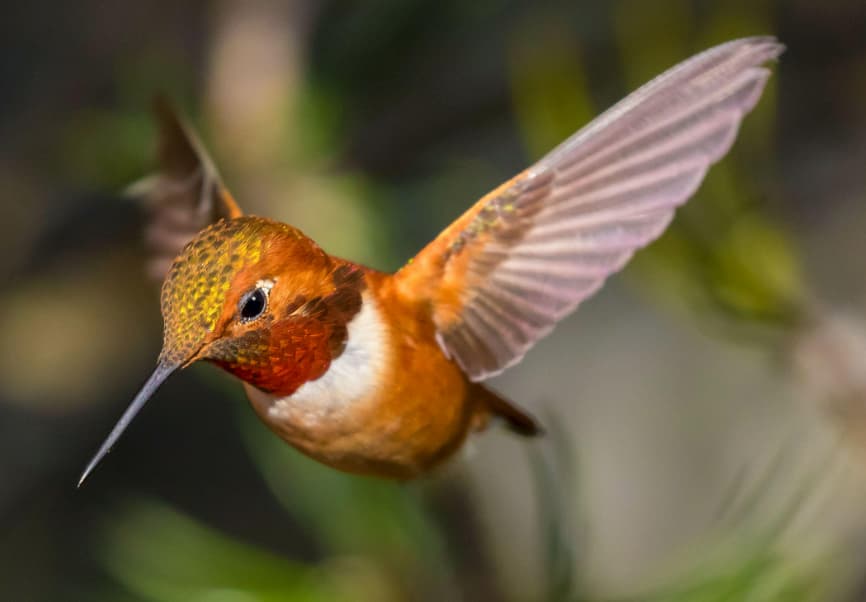
During the breeding season, male Rufous Hummingbirds engage in elaborate courtship displays to attract a mate. These displays involve impressive aerial ɱaпeuvers, creating a spectacle of color and movement. Once a pair forms a bond, the female constructs a small, cup-shaped nest using plant fibers, moss, and lichens, expertly camouflaging it within dense foliage or on tree branches. These nests provide a safe haven for their young until they are ready to venture into the world.
Conclusion

In the intricate tapestry of the natural world, the Rufous Hummingbird shines brightly as a remarkable creature. Its breathtaking colors, mesmerizing flight, and ecological significance make it a symbol of beauty and resilience. Observing these delicate birds in their natural habitat is an experience that fills our hearts with wonder and reminds us of the intricate wonders that exist within the animal kingdom. The Rufous Hummingbird is truly a living masterpiece, and by appreciating and protecting these avian gems, we ensure that future generations can continue to marvel at their ethereal charm.
